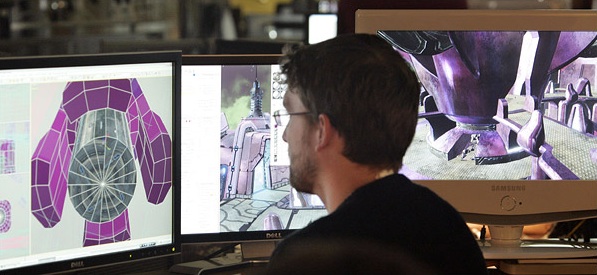72

9.5.1 Comparing the four emerging technologies
This chapter has looked at four very different emerging technologies: social media, serious games; immersive technologies; and artificial intelligence. Each has the potential to influence profoundly teaching and learning in a digital age.
Social media have a wide range of possible applications, particularly to enable students to create or generate their own work and to work collaboratively at a distance. Both serious games and immersive technologies such as virtual and augmented reality will be extremely valuable in ‘niche’ areas of teaching and learning. They both have the potential to develop some of the higher order learning skills of problem solving, analysis, intuitive thinking, and creative thinking, and also can be used to develop affective skills, such as empathy.
However, neither serious games nor immersive technologies are likely to be ‘core’ technologies that will be extensively used across all forms of teaching. Also both need significant investment of time and possibly money if they are to be of good quality for teaching purposes. In particular, they will need a multi-disciplinary team approach to design and development. Therefore it will be essential to choose the right kind of project, such as topics that are difficult to teach using other methods, or projects aimed at learners who struggle with more conventional teaching methods. Above all, it will be necessary to identify and exploit the optimum educational affordances of these two technologies.
Artificial intelligence is somewhat different to the other three emerging technologies. Artificial intelligence to date manages well the presentation and testing of content acquisition, comprehension and understanding, but so far has not shown much promise in supporting the development or assessment of the higher level cognitive skills needed in a digital age. However, by focusing on supporting learners’ comprehension and understanding, AI can free up human teachers and instructors to focus their time on the development of these higher order skills. Again, this emphasises the importance of teachers and instructors moving their focus away from content delivery – which AI can increasingly manage well – and focusing more on teaching methods that support higher order skills development.
Furthermore these four technologies are not really separate and unrelated but will become increasingly integrated. AI applications could improve the power and range of both serious games and virtual reality. Games can be designed within a virtual reality. The extent to which these technologies become feasible in education will depend heavily on applications outside education which can then be carried over and adapted for educational purposes.
Again though we come back to three critical issues:
- what are the educational goals of the application?
- to what extent does the application help with the development of higher order cognitive and/or affective skills?
- what are the costs and organizational implications of such applications within education?
9.5.2 Lessons to be learned from the use of emerging technologies
New technology developments show no sign of slowing down. Over time, other new technologies will emerge as well as or within the four technologies discussed in this section. Educators will continue to be challenged to incorporate these new technologies as they emerge. In responding to this challenge, the following needs to be considered:
- New technologies are not necessarily better than existing technologies for teaching. They may however offer new opportunities for teaching differently, and may enable new or better learning outcomes, as well as improving on existing learning outcomes.
- Old technologies rarely disappear completely as a result of popular new technologies. Older technologies become more focused and find a niche that they serve best.
- Most educators will be best served by not jumping on the latest technology bandwagon, but should wait a couple of years for a particular technology to reach at least the Gartner ‘slope of enlightenment’ before experimenting with the new technology.
- More important than the general characteristics of a new technology is its design and application in education; in other words, how does it perform as an educational medium? Being a big success in the financial sector for instance does not mean a technology will be automatically appropriate for education. Indeed, the technology may need to be heavily adapted or modified to be useful in the educational sector.
- Given the rate of change and the number of new technologies entering the market, educators need a strong framework or set of criteria for selecting and evaluating technologies, not just emerging technologies but also existing technology. This will be discussed in the next chapter.
Activity 9.5 Assessing and developing applications of emerging technologies
- Are there other emerging technologies that you would have chosen over these four – or within these four broad categories are there particular applications that you think are or will be important for teaching in the future?
- How do you think teachers/instructors should react to emerging technologies? Ignore them? Wait for others in education to try them first? Or should they jump in and try a new technology as soon as possible?
- Some institutions such as UBC and Drexel University have set up emerging media labs to encourage faculty to experiment with new technologies. What other methods could be used to encourage teachers and instructors to experiment with new technologies?
For feedback on this activity, and my personal observations on these four emerging technologies, click on the podcast below:
